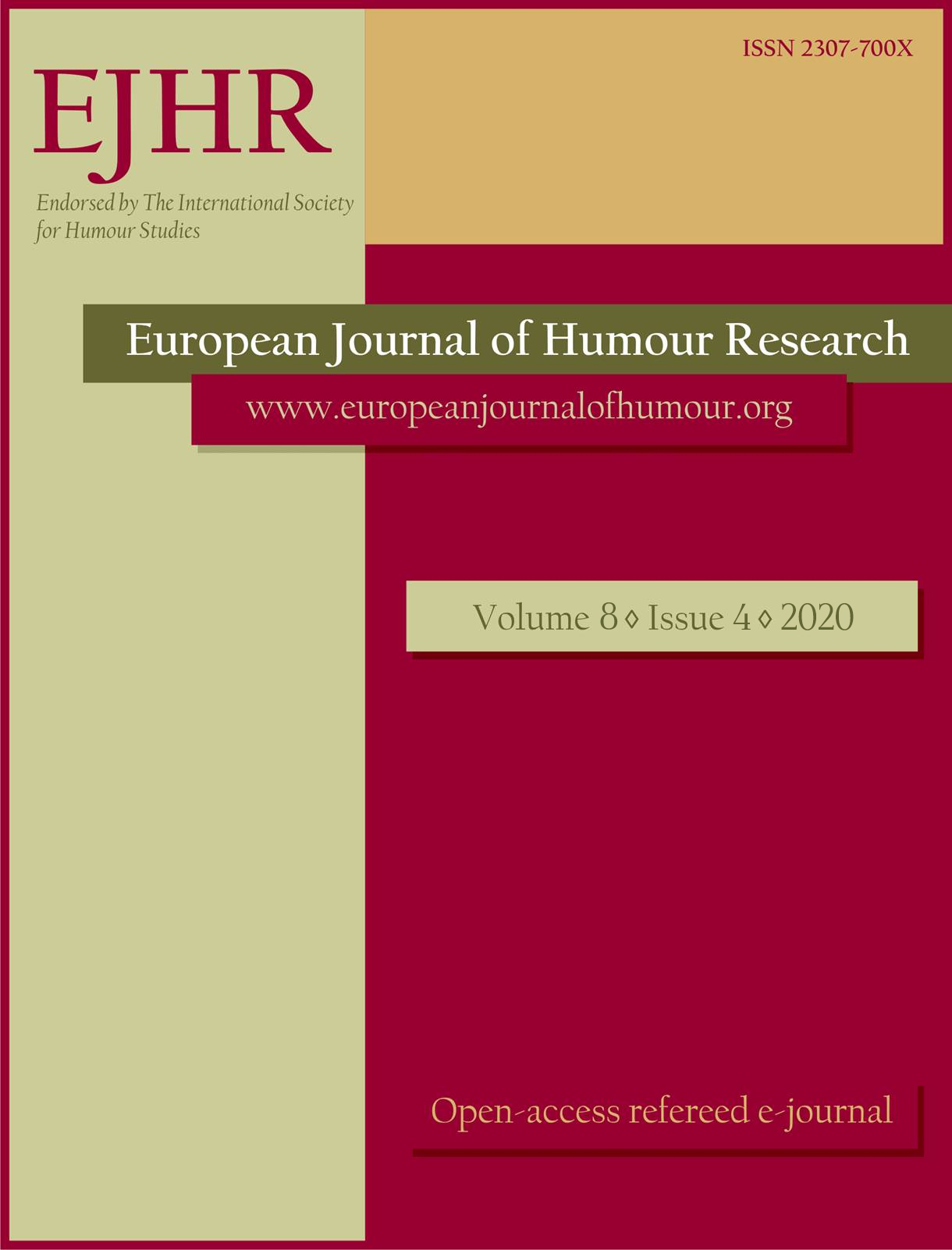
We kindly inform you that, as long as the subject affiliation of our 300.000+ articles is in progress, you might get unsufficient or no results on your third level or second level search. In this case, please broaden your search criteria.


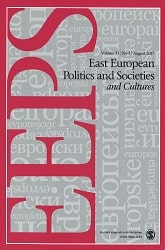
The number of books, papers, articles, reports on Yugoslavia, former Yugoslavia, ex-Yugoslavia, Serbia and Montenegro, Serbia, Montenegro, Serbian republics in Croatia and Bosnia and Herzegovina, Bosnia, Bosnia and Herzegovina, Macedonia, former Yugoslav Republic of Macedonia, Kosovo, not to mention Slovenia and Croatia, grows and grows. I too have added to that growing field. Still, understanding seems to be diminishing rather than growing. Why? There are, I think, three reasons. I shall discuss them in a somewhat balkanized way because that approach may further comprehension. [...]
More...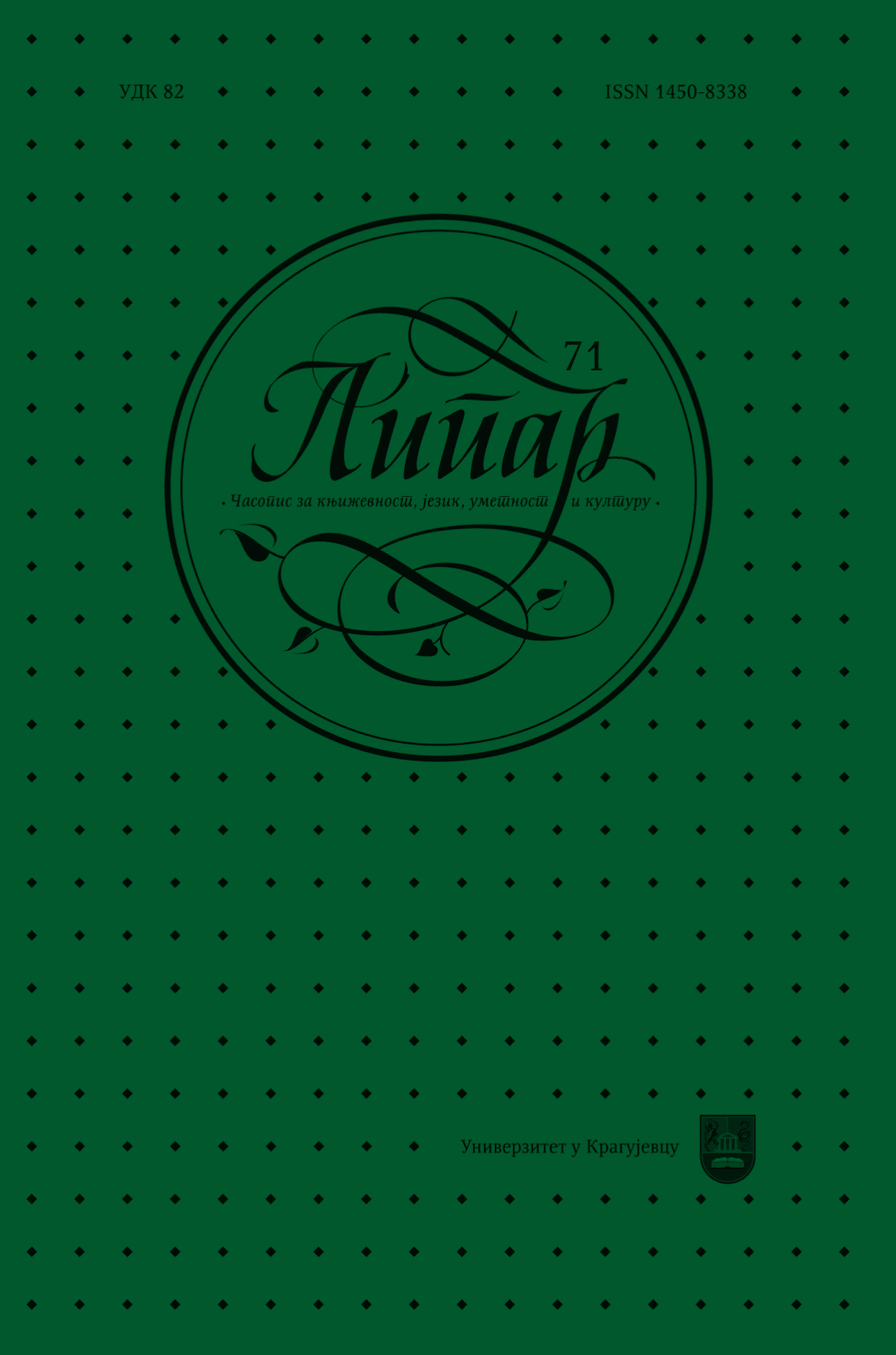
In this paper, the componential analysis of the English and Serbian groups of synonyms of the verb stare has been conducted. The main aims of the research are the representation of the groups of synonyms of the verb stare, as well as the emphasis of the diagnostic characteristics on which the examined verbs differ. Eventually, the suggested translations of the verbs have been studied. The main conclusion is that the Serbian language contains fewer verbs belonging to this semantic field. For that reason, most of the synonyms have been defined by a semantically neutral verb (e.g. look) modified by an appropriate adverb or a compound adjective. What is more, the results show that the consulted dictionaries and corpora provide detailed and complete information on this subject.
More...
Inclusion of others’ words into authorial discourse is actually the trans- mission of someone else’s speech. Forms of the journalistic style of writing are used in order for transmission of other people’s speech to have the same expressive value as to readers of newspaper media. In the introductory part we present the impor- tance and role of journalistic style of writing in transferring someone else’s speech into newspapers. The paper also discusses two grammaticalized types of conveying another’s speech - direct and indirect - from daily newspapers published in the Re- public of Serbia. We will pay attention to the examples taken from the texts that are an integral part of the daily newspapers which we have divided into two large groups, depending on whether they belong to the model of direct or indirect speech and what their fuction is in a given context.
More...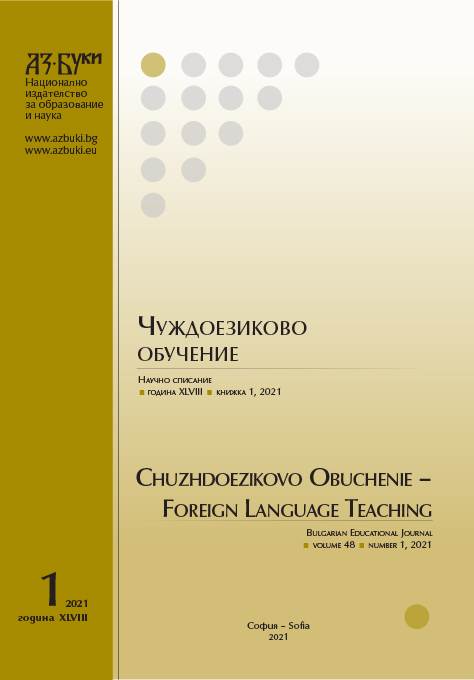
The object of the research is one of the first two modern Bulgarian textbooks on letter writing – „Pismennik obshtepolezen“ („A Letter Writing Handbook of General Use“), 1835, by the prominent Revival pedagogue Hristaki Pavlovich. The book on letters is presented in the context of the cultural and historical situation in the second quarter of the 19th century, and from the point of view of the changes in the Bulgarian school, where new teaching methods and “modern sciences” were introduced. The article analyzes the theoretical part of „Pismennik obshtepolezen“, which contains instructions and rules for writing letters, and groups the types of letters and their components. Based on some statements by the author, conclusions are drawn about his views on ethical, social and pedagogical issues.
More...
Review of: Lidija Milković - Neda Pintarić, Ivana Čagalj i Ivana Vidović Bolt. (ur.), Komparativnoslavističke lingvokulturalne teme. Srednja Europa, Zagreb, 2019., 409 str.
More...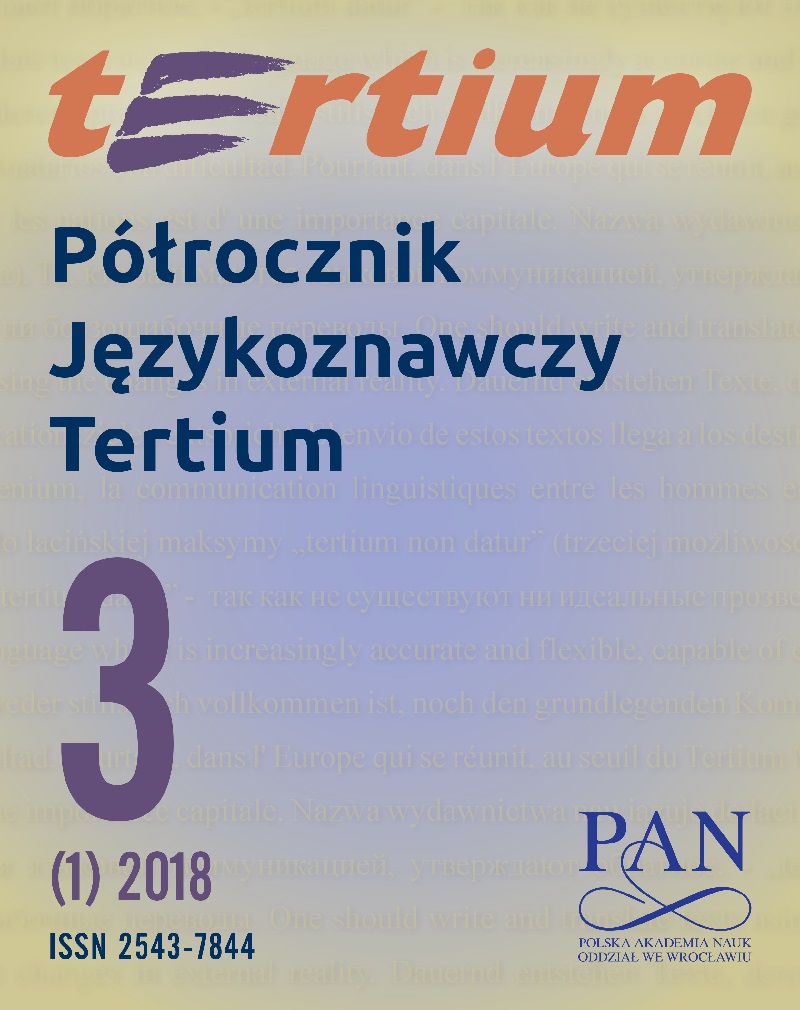
The aim of our study is to examine the multiple ways Greek immigrants position themselves in terms of cultural identity. Recent approaches to immigrants’ cultural identities tend to employ the concept of transnationalism to account for their hybridity and fluidity. Here, we intend to show that Georg Simmel’s ([1908] 1971) notion of the ‘stranger’ is also relevant to the analysis and interpretation of such transnational identities. In this context, and drawing on positioning theory (Davies and Harré 1990), we argue that our informants mainly construct hybrid ‘stranger’ identities as both Greeks and Canadians or as feeling Greek but not when in Greece. Our data consists of 15 semi-structured interviews exploring the immigrant experiences of Greeks who migrated to Canada from the mid-1940s until the late 1970s. The analysis focuses on (a) the discursive means the informants employ to construct the hybrid identity of the ‘stranger’, and (b) the specific purposes they fulfill. It appears that hybrid self-positionings are achieved via the use of (a) the disclaimer ‘I am/feel Greek but…’, (b) metaphors, (c) small stories, and (d) repair mechanisms. We also argue that, via constructing ‘stranger’ identities, the immigrants of our data claim Greekness, on the one hand, and legitimize themselves as Canadian citizens on the other, while also distancing themselves from the Greeks living in Greece and the respective negative stereotypes.
More...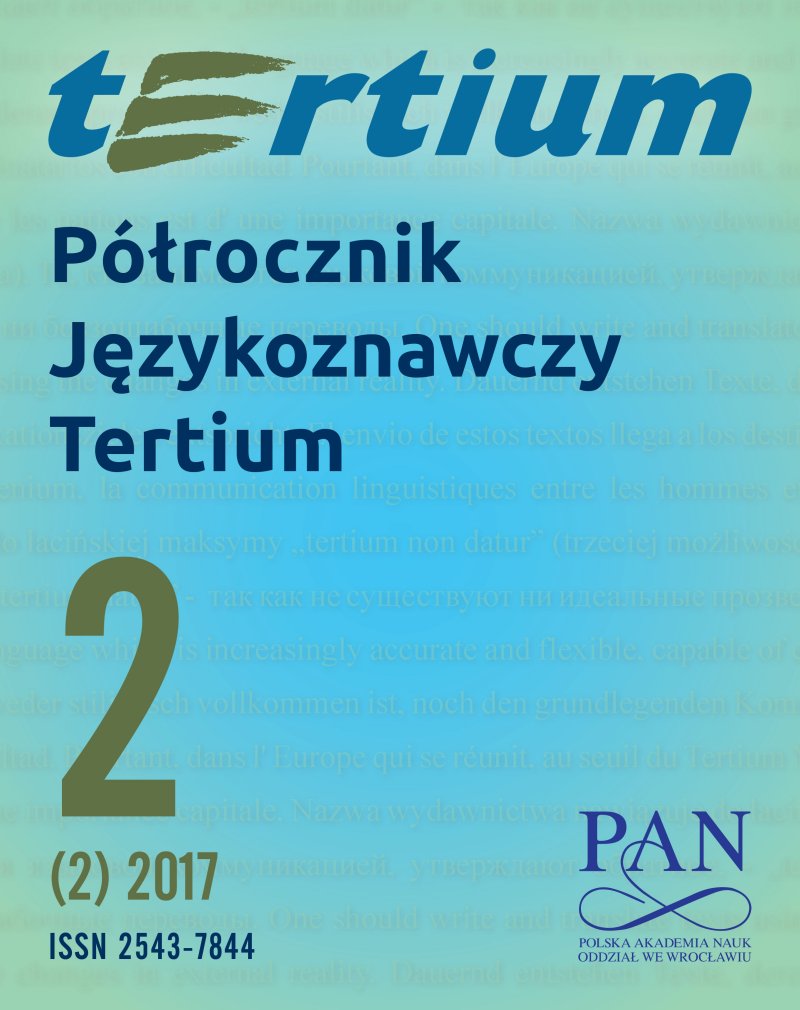
W artykule tym jest analizowane znaczenie kontekstowe czterech przysłówków trochę, nieco, mało, niezbyt oraz ich francuskich odpowiedników un peu, un (tout) petit peu, peu, pas trop we współczesnym języku prasy i polityki. Według podstawowych definicji słownikowych służą one do wyrażania słabego natężenia cechy. Dziennikarze nie chcąc kogoś urazić, a politycy chcąc lepiej wypaść, mówiąc o sobie samych, używają ich, aby w sposób eufemistyczny powiedzieć o negatywnej cesze (trochę, nieco / un peu) albo aby prawie zanegować istnienie cechy pozytywnej (mało, niezbyt / peu, pas trop). Często jednak mówiąc mniej, dziennikarze czy politycy dają odczuć, że powiedzieli więcej. Litota – którą siłą rzeczy można dokładnie odczytać tylko w kontekście użycia, jest zawoalowanym sposobem skrytykowania kogoś lub czegoś, wytknięcia poważnego niedociągnięcia. Używa się jej dla wyrażenia silnego stopnia natężenia lub nawet nadmiaru cechy negatywnej. // In this article we analyze the context meaning of four adverbs: trochę, nieco, mało, niezbyt and their French equivalents un peu, un (tout) petit peu, peu, pas trop in contemporary press and political language. According to basic dictionary definitions, they are used to express weak intensity of a feature. The journalists, trying to avoid offending somebody, and politicians trying to make better impression while talking about themselves, use them, to talk about a negative feature in an euphemistic manner (trochę, nieco / un peu), or to “almost deny” the existence of a positive feature (mało, niezbyt / peu, pas trop). However, while telling less, the journalists or politicians often intend to make an impression that they said more. Litotes, which inevitably can be accurately understood only in the full context of use, is a veiled way to criticize someone or something, to point out a serious shortcoming. It is used to express a strong degree or even an excess of a negative feature.
More...
The study looks at how the notion of the Other, understood here as an ethnically, religiously, linguistically, and/or racially “different” immigrant, is portrayed in a specific section of English-language media discourse. The data come from British, American, Canadian, Australian, and New Zealand media (predominantly the press) but are limited to six articles in total, so that the proposed analysis is qualitative, rather than quantitative or statistical. It is an exercise in reconstructing a cultural model of the Other, not a presentation of a finished product, which – if and when the analysis is expanded to cover a much more extensive corpus – can yield descriptions of this heterogeneous notion in terms of differential cultural models. On the theoretical side, the study also links cultural model to the notion of cultural mindset.
More...
Dzieci przedszkolne i wczesnoszkolne poza komunikowaniem się z otoczeniem często „rozmawiają” same ze sobą – mówią do siebie i dla siebie. Podjęte w niniejszym artykule rozważania dotyczą analizy wypowiedzi dzieci na płaszczyźnie językowej. Na wskazanie cech charakterystycznych mówienia do siebie pozwoliły wypisy z kilku zarejestrowanych zabaw dzieci. Na podstawie przeprowadzonych badań autorka dowodzi, że można mówić o odrębnym stylu „mówienia do siebie”. Cel wewnętrznego komunikowania się jest tylko pozornie inny niż w tradycyjnej komunikacji – ma swojego nadawcę i odbiorcę. Jest on jednak na tyle specyficzny, że komunikacja między nadawcą a odbiorcą generują się w jednym umyśle. Korpus badawczy został przeanalizowany na poziomie leksykalnym, morfologicznym, składniowym oraz na poziomie tekstu. Pozwoliło to na uwypuklenie osobliwości mówienia do siebie dziecka, m.in. spontaniczność wypowiedzi naruszanie spójności wypowiedzi, liczne mikrotematy zabawy, niejasność komunikatu słyszanego „na zewnątrz”, kreatywność, teatralizacja. // Apart from communicating with the outside world, children at kindergarten and early primary school often “speak” to themselves and for themselves. The present article attempts to reflect upon children’s speech in its linguistic dimension, aiming at isolating the characteristic features of speaking to oneself based on a few recorded children’s plays. The results of the analysis demonstrate that there exists a separate style of “speaking to oneself”. The objective of internal communication is not much different from the traditional interaction – it does have its sender and receiver. However, it is peculiar since the interaction between these two persons is generated in a single mind. The research corpus has been analysed on the level of lexis, morphology, syntax and discourse. As a result, idiosyncratic features of a child’s speaking to oneself have been isolated, such as spontaneity of speech, violation of coherence of speech, numerous micro-topics of play, ambiguity of the message when heard “on the outside”, creativity and dramatization.
More...
Badanie napisów jest młodą dyscypliną naukową. Nie ma wielu publikacji analizujących i prezentujących kwestię tłumaczenia audiowizualnego, w szczególności napisów filmowych/teatralnych. Dlatego nie ma wielu źródeł istotnych informacji dotyczących problemu. Przykłady zawarte w tym tekście pochodzą z autorskiej obserwacji filmów i spektakli teatralnych. Autor odwołuje się do badań przeprowadzonych wśród kinomanów podzielonych na trzy grupy – osoby z wykształceniem filologicznym, osoby z wykształceniem uniwersyteckim oraz osoby bez wykształcenia uniwersyteckiego. Tekst dotyczy także napisów z przedstawień teatralnych (Teatr Dramatyczny, Teatr Studio, Nowy Teatr). Wybrano następujące spektakle. Kabaret J. Kandera, Rosyjski kontrakt Andrieja Płatonowa. Ciekawy przypadek psa wieczorową porą Simona Stephensa, Biedny Ja, Suka i Jej nowy koleś Michała Walczaka, Nasza klasa autorstwa Tadeusza Słobodzianka oraz Bent Martina Shermana. W kolejnych częściach artykułu autor przedstawia realia dotyczące etapów tworzenia napisów filmowych lub przygotowania nadtytułów teatralnych i ich weryfikacji. Odpowiada na pytanie, kto, kiedy i jak ocenia te napisy. // Subtitles research is a young discipline in the field of science. There are not many publications analyzing and presenting the issue of audiovisual translation, in particular film/ theatre subtitles. Therefore, there are not many sources of relevant information concerning the issue. Examples included in this text come from the author’s observation of films and theatre performances. The author makes reference to the research conducted among moviegoers divided into three groups – people with philological educational background, people with university background, and people without any university education. The text also relates to subtitles from theatre performances (Teatr Dramatyczny, Teatr Studio, Nowy Teatr). The following performances were chosen: Cabaret by J. Kander, The Russian Contract, by Andrei Platonov, The Curious Incident of the Dog in the Night-Time by Simom Stephens, Poor Me, the Bitch, and Her New Guy by Michał Walczak, Our Class by Tadeusz Słobodzianek and Bent by Martin Sherman. In the following sections of the paper, the author presents realia concerning the stages of film subtitles or theatrical supertitles preparation and their verification. He addresses the question who, when and how evaluates these subtitles.
More...
Komunikacja niewerbalna towarzyszy bezpośredniej ustnej komunikacji werbalnej. Niewerbalne środki komunikacyjne, konstytuujące style komunikacyjne kulturowo uwarunkowane, są zjawiskiem, którego nie sposób pominąć również w przekładzie. Przekład, w szczególności audiowizualny i ustny, sprzyja poznawaniu niewerbalnych stylów, m.in. w zakresie kinezyki, chronemiki, proksemiki, pantomimiki, haptyki pochodzących z innych obszarów kulturowych. Oprócz funkcji poznawczej niewerbalne style komunikacyjne pełnią funkcję wspomagającą proces tłumaczenia (np. ustnego). Niekiedy niewerbalne środki komunikacyjne pomagają zweryfikować jakość przetłumaczonego przekazu werbalnego. // Nonverbal communication accompanies direct oral verbal communication. The means of nonverbal communication, constituting culturally determined communication styles are a phenomenon which cannot be overlooked in translation. Translation, in particular audiovisual and interpretation, helps to become familiar with nonverbal styles, inter alia relating to kinesics, chronemics, proxemics, pantomimics, haptics from other spaces of culture. Apart from a cognitive function, nonverbal communication styles also serve an auxiliary function in the translation process (e.g. oral translation). Sometimes nonverbal communication styles help to verify the quality of translated verbal communication.
More...
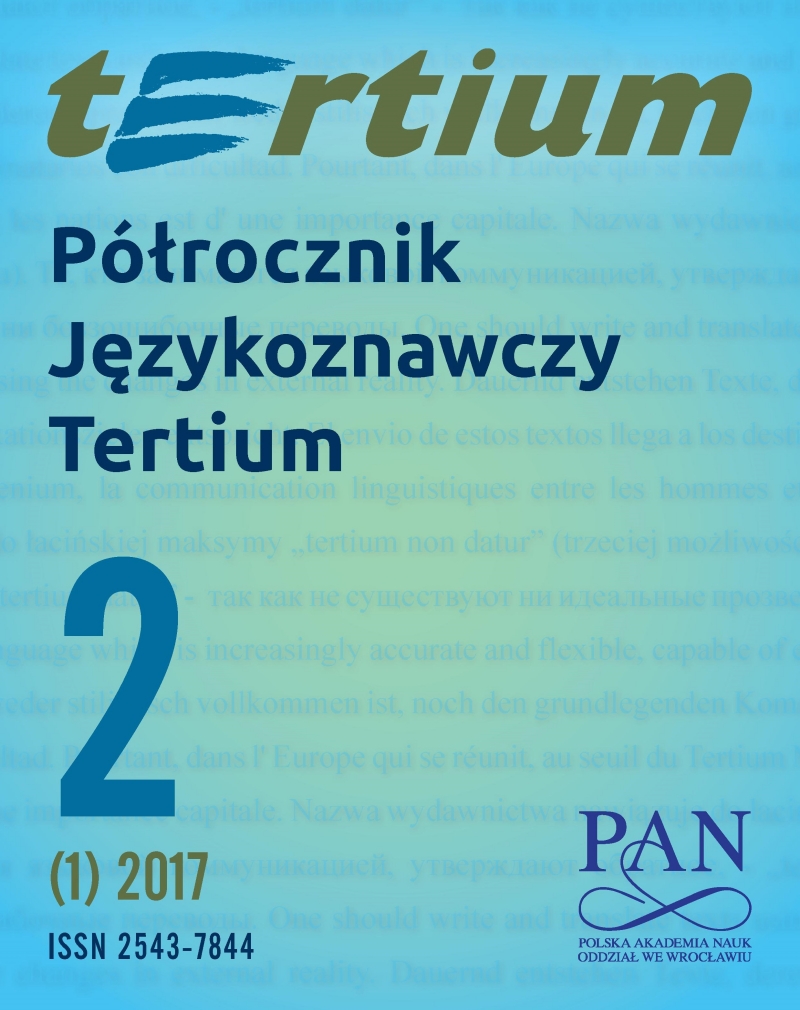

Badania pragmatyczne nad „grzecznością” w istotny sposób ograniczają możliwości opisu konkretnych sytuacji interakcji. Dzieje się tak głównie ze względu na to, że zdroworozsądkowe a zarazem normatywnie zorientowane pojęcie „grzeczności” uniemożliwia dostrzeżenie licznych zjawisk postrzeganych jako oczywiste przez rodzimych użytkowników kodu w rzeczywistych warunkach komunikacji. W artykule niniejszym dążono do ukazania przynajmniej kilku istotnych obszarów uzusu językowego, do opisu jakich studia „grzecznościowe” nie są w stanie dotrzeć. Postulowano rozszerzenie spektrum badań nad rzeczywistymi sytuacjami kontaktu językowego, poprzez odejście od wyłącznie „grzecznościowego” punktu widzenia, z wykorzystaniem ramy opisowej honoryfikatywności (modyfikacji honoryfikatywnej), jako zjawiska obecnego w każdym rzeczywistym przekazie, powiązanego z osiągnięciem adekwatności komunikacyjnej komunikatu. Zwrócono również uwagę na fakt, że badania nad modyfikacją honoryfikatywną, obejmujące całość aktywności językowej jednostek i grup, mogą (i powinny) dotyczyć także polityki językowej, pojmowanej jako wyposażenie użytkowników kodu choćby w podstawowy zestaw wzorców jego użycia umożliwiających efektywną komunikację. // Pragmatic studies on „politeness” limit significantly the possibilities of description of actual situations of communication. It is mainly because of the fact that a common-sense oriented normative notion of „politeness” makes it impossible to notice numerous phenomena taken for granted by the native users of a code in actual circumstances of communication. In this paper, it has been attempted to show at least some important areas of language usage that the „politeness” related approaches are unable to reach. It has been postulated to widen the range of studies over actual situations of communications, by abandoning the solely „politeness” focused point of view, with the implementation of the notion of honorific modification (HM), as a phenomenon present in any actual message, related to the achievement of communicational adequacy of a message. It has also been pointed out that the studies of HM, covering all communication related activity, may (and: should) be related also to the language policy, perceived as equipping the language users at least with basic set of its usage patterns, enabling effective communication.
More...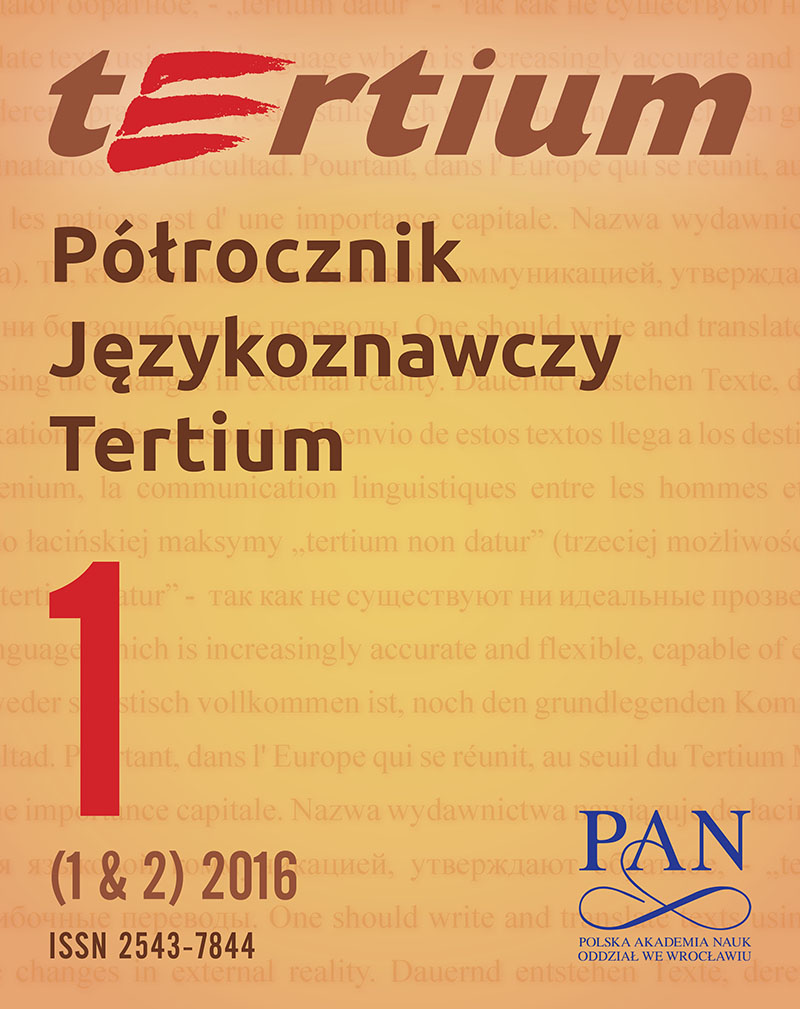
Współczesne media elektroniczne stały się celem licznych badań językoznawczych. Niniejszaanaliza dotyczy jednej z najpopularniejszych ich odmian – krótkiej wiadomości tekstowej. 160prywatnych SMSów, zarówno w języku polskim, jak i angielskim przebadano pod względem ichcech formalnych, skupiając się głównie na aspekcie redukcji tekstu pod względem obecnościbądź eliminacji elementów fatycznych, szczególnie zwrotów adresatywnych, powitań,pożegnań oraz emotikonów, a także interpunkcji. Badanie przeprowadzone również wodniesieniu do wcześniejszej analizy wiadomości mailowych wykazało znaczny procenteliminacji elementów konwencjonalnych tekstu w SMSach w porównaniu z mailami,szczególnie zwrotów adresatywnych i powitań, redukcję formalną zwrotów pożegnalnych orazomijanie znaków przystankowych, pokazując tym samym, jak dużo elementów w komunikaciejest redundantnych. Analiza wykazała również widoczne różnice między SMSami polskimi iangielskimi, zwłaszcza pod względem frekwencji takich elementów, jak podpis, zwrotpożegnalny, użycie emotikonów oraz skracanie wyrazów, które znacznie częściej występowaływ tekstach angielskich niż polskich. // Contemporary electronic media have become a frequent object of linguistic research. The present analysis concerns one of its most popular manifestations – the short text message. 160private text messages, both Polish and English, have been investigated in terms of their formal features, with a focus placed mainly on the aspect of text reduction with respect to the presence or absence of its phatic elements, primarily forms of address, greetings, leave-takings,emoticons as well as punctuation. The analysis conducted also with reference to an earlier investigation of the electronic mail has demonstrated a significant percentage of the conventional text elements elimination in text messages in comparison to emails, especially of forms of address and greetings, a formal reduction of leave-taking formulas as well as the omission of punctuation, this way indicating how many elements of communication appear to be redundant. The analysis has also shown visible differences between Polish and English text messages, particularly in terms of the frequency of the use of such aspects as the signature, the leave-taking formula, the use of emoticons and word abbreviations, which appear to be a more typical element of English rather than Polish text messages.
More...
W artykule przedstawiono zmiany w języku ukraińskim po odzyskaniu przez Ukrainę niepodległości. Przed 1991 rokiem władza radziecka – prócz znanych z czasów Rosji carskiej różnego rodzaju zakazów ‒ stworzyła system ingerencji w wewnętrzne prawa językowe, zabraniając jednych wyrazów, konstrukcji syntaktycznych czy zasad ortograficznych, a propagując inne, bliższe językowi rosyjskiemu, który de facto posiadał pozycję dominującą w każdej prawie dziedzinie. Doprowadziło to do nienormalnej sytuacji językowej, nieświadomego mieszania języka ukraińskiego i rosyjskiego, do „rozchwiania” norm języka ukraińskiego zarówno fonetycznych, jak i morfologicznych, a także norm syntaktycznych oraz łączliwości leksykalnej. Dlatego też po 1991 roku ‒ prócz zmian w systemie leksykalnym, związanych z rozwojem nauki, techniki oraz przekształceniami politycznymi i ekonomicznymi ‒ obserwujemy dążenie do odejścia od form zrusyfikowanych, naruszających normy ukraińskiego języka literackiego i powrót do starych rodzimych tradycji językowych. // The article discusses changes in Ukrainian after Ukraine had regained independence. Prior to 1991, the Soviet authorities – apart from various prohibitions known from the time of Russian tsars – had created a system of interfering in internal laws of language, prohibiting certain words, syntactic constructions or orthographic rules, and propagating others, closer to Russian, which had a virtually dominating position in nearly all fields. This led to an abnormal linguistic situation, the unconscious fusing of Ukrainian and Russian, both at the level of phonetics and morphology as well as syntactic norms and collocations. That is why, after 1991 – apart from changes in the lexical system, associated with developments in science, technology and political and economic transformations – we can observe the tendency to depart from Russified forms, which violate the norms of Ukrainian literary language, and to return to old native linguistic traditions.
More...
Przedmiotem pracy jest pojęcie twarzy (wizerunku własnego jednostki) oraz jego rola wkontaktach międzyludzkich. Społeczne znaczenie twarzy uzależnione jest od kontekstukulturowego, a w szczególności od wartości dominujących w danej kulturze oraz od charakterurelacji społecznych tam występujących. Twarz uważana jest za główny wyznacznik dynamikiinterakcji społecznej w kulturach zachodnich. Nie we wszystkich kulturach, jednak, pełni onatak ważną rolę. Celem pracy jest przedstawienie głównych wyznaczników dynamikiinterakcyjnej w kulturze anglo-amerykańskiej i polskiej. // The subject of the study is the concept of face (self-image of a person) and its role in interpersonal contacts. The social meaning of face depends on a cultural context, particularly on values that dominate in a culture and on the nature of social relations which occur there.In Western cultures face is regarded as the main indicator of the dynamics of social interaction.It does not play an equally significant role in all cultures, however. The present article aims at presenting the main indicators of interactive dynamics in Anglo-American and Polish cultures.
More...
Gatunki mowy mogą służyć odmiennym funkcjom pragmatycznym w rozmaitych środowiskach komunikacyjnych. Niekiedy funkcje te ujawniają zróżnicowania niezrozumiałe dla nierodzimych użytkowników języka i kultury. Stwierdzenie to pozostaje w szczególny sposób aktualne w komunikacji międzykulturowej, na granicy środowisk kulturowych. Niniejszy artykuł zawiera próbę schematycznej charakterystyki różnic między zastosowaniem gatunku mowy (procedury komunikacyjnej) przeprosin w polskim i japońskim środowisku komunikacyjnym. Postulaty badawcze weryfikowano na konkretnych przykładach aktywności komunikacyjnej w środowisku międzykulturowym. // Genres of speech may serve different pragmatic functions in various communication environments. In some cases these functions may reveal differences unintelligible for nonnative users of language and culture. This statement is especially valid in cross-cultural communication, on the verge of cultural environments. This paper brings an attempt at a schematic description of differences between the implementation of a speech genre (communication procedure) of apology in Polish and Japanese communication environments. Research postulates have been verified using actual examples of communication activity in a cross-cultural environment.
More...